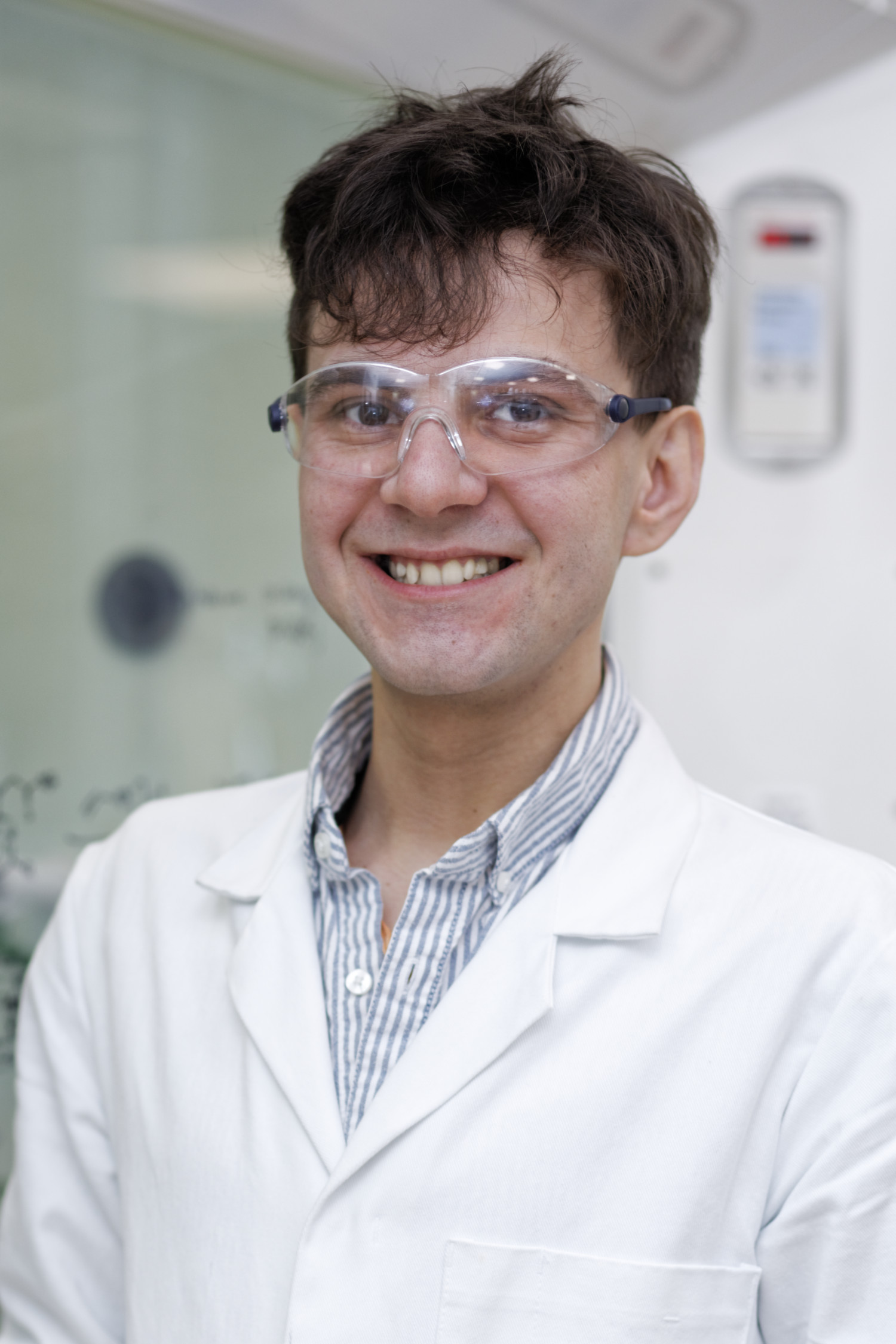
This idea, which he studued for his PhD in Professor David Spring’s organic synthesis group, began when contemplating how to combat drug resistance, especially in prostate cancer, which often develops mutations in response to chemotherapy which are resistant to further treatment.
Whilst some research focuses on developing new drugs, there are already available therapies for prostate cancer, so Radu considered new ways to administer existing drugs more effectively.
“We looked at prostate cancer medications and how tumour cells can develop resistance to them. We wondered if covalently linking two drugs together could make them more effective at preventing the inevitable resistance.”
Radu decided to make a combination drug that takes two treatments and joins them together with a linker to create a molecule with better cancer cell killing potency than each drug molecule has individually.
Click chemistry
 Radu decided to connect the prostate cancer drugs EPI-001 and enzalutamide. On its own, EPI-001 requires a large number of pills every day to be effective, and enzalutamide slows down cancer growth but has notable limitations, such as potential tumour resistance.
Radu decided to connect the prostate cancer drugs EPI-001 and enzalutamide. On its own, EPI-001 requires a large number of pills every day to be effective, and enzalutamide slows down cancer growth but has notable limitations, such as potential tumour resistance.
To connect the two drugs Radu used click chemistry, the Nobel prize winning technique in which molecules form bonds between one another as easily as the ‘click’ of a seatbelt buckle. Click reactions connect two molecules rapidly and without any by-products, and the first click chemistry-based therapies have only entered clinical trials in the last few years. The technique’s use in medicinal chemistry is rapidly growing and there is lots yet to explore.
Using click chemistry, Radu was able to link the drugs together and show that they had a more powerful effect in vitro than on their own.
Illuminating results
Radu tested the new linked drug using a substance that glows when certain genes are active, and stops producing light when these genes are blocked. The combination drug reduced the luminescence of this test by a quarter. This indicated that the combination drug is effective at preventing the genes associated with prostate cancer from activating.
The hypothesis of linking two drugs in one turned out to be promising, however Radu emphasises that the results need to be further tested. But this is a promising first step before the group considers in vivo studies.
Radu successfully submitted his PhD this year and now works at AstraZeneca where he continues to research and develop cancer therapies.
This article first appeared in Chem@Cam Issue 66. You can find the magazine online here.

